US Apple Association
Apples: A Class Act! (Grades 4–6)
Middle schoolers have a bushel of fun as they engage in activities and research core facts about apples. Packed with suggestions for in-class activities and out-of-class research, the colorful 6-page packet is sure to satisfy hungry...
Curated OER
Kirigami: The Ancient Art of Paper Cutting
Young scholars perform inquiry into the ancient art of Kirigami. The research provides a context for the lesson and how it is related to History. Students also appreciate the art for the sake of its contribution to culture.
Consortium for Ocean Science Exploration and Engagement (COSEE)
Fish Morphology
Life comes in all different shapes and sizes, and fish are no exception. Here, young scientists create fish prints as they learn how specific characteristics allow different species to survive in their particular habitats.
Curated OER
Put on a Happy Face!
Students explore using recycled materials. In this ecology/art lesson, students use recycled materials to create a Halloween mask. Students view folk art made of natural and available resources, and discuss possible cultural uses for...
Curated OER
Contrast- Printmaking- The Fin Art of Science
Students explore the art of printmaking. They discuss relief prints and the art of fish printing (Gyotaku). They view examples of the artwork of Gyotaku and also observe the various characteristics of different species of fish. Finally...
American Museum of Natural History
Thinking in the Three Dimensions
Discover different dimensions with paper folding. Pupils first read about zero, one, two, and three dimensions, and then learn about the fourth dimension, time. They then use origami to create models of shapes in three dimensions and use...
Gobal Oneness Project
Passionate Pursuits
Not all technology is digital. Teach learners about the low-tech maker movement with a photo essay about six artisans from California and two articles about the local creator movement. After tackling the photo essay in small...
Curated OER
Natural Wonders of China And Japan
Students identify some of the attributes of China and Japan and compare and contrast the way Chinese, Japanese, and American artists represent nature in art. The lesson is for upper-elementary classrooms.
Curated OER
Monet's Japanese Bridge -A Scientific Journal
Fourth graders design a bridge and answer critical questions about scientific inquiry and enterprise in a Science journal.
Curated OER
Social Studies: Exploring Japan
Fourth graders examine the culture and environment of Japan, beginning with a KWL chart. They use clay and cups of water to construct representations of the Japanese Islands. After designing flags representing farming and food, 4th...
Curated OER
Build a Paper Plane
Students study the history of the paper plane. In this design lesson students create several types of paper planes and determine if there is a difference in mean flight distances.
Curated OER
Around the World, A Multicultural Unit
Learners investigate Native American tribes through their stories. In this cultural lesson, students read stories of the Inuit tribe and discuss the themes, people, and customs. Learners illustrate a picture of the Inuit...
Curated OER
Arthropod Mouth Parts and Food
Students identify the different types of mouths arthropods have for eating various types of food. Given photographs of the different types of arthropods, students identify which mouth they have and what type of food they can eat with...
Curated OER
Ocean Temperatures
Pupils list data collected by marine buoys and the different kinds of moored buoys. They describe how data is transmitted worldwide. They explain the difference between near shore and offshore air and water temperatures.
Curated OER
Trout In The Classroom
Students have trout in their classroom and complete journaling, checklists, temperature checking, and ammonia level recording. In this trout lesson plan, take weekly observation records of their trout.
Curated OER
Learning About Japan Through Its Kites--Intermediate
Students read various readings on two kit making sessions. They locate places and human spatial patterns using a map. Students design in two dimensions using line to create details.
Huntington Library
Huntington Library: Garden Lesson Plans: Elements of a Japanese Garden [Pdf]
A multi-faceted activity where students learn about the elements of a Japanese garden, then construct a peepshow book that demonstrates their understanding of foreground, middle ground, and background to represent a Japanese garden....
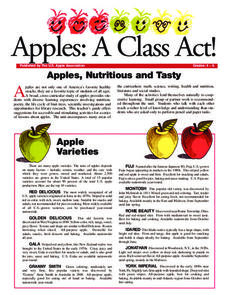

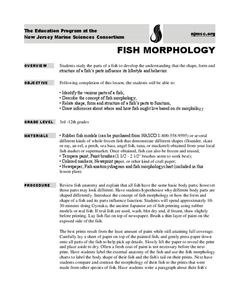
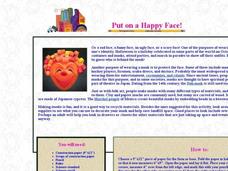





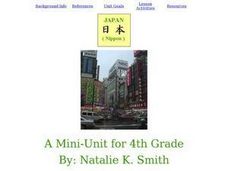
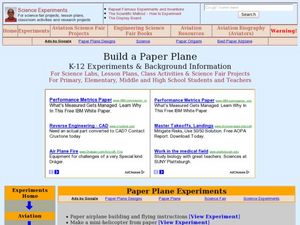
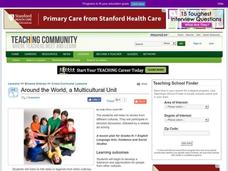

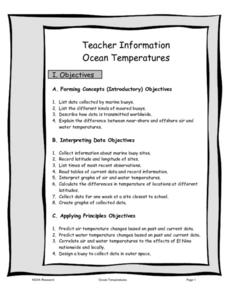


![Huntington Library: Garden Lesson Plans: Elements of a Japanese Garden [Pdf] Lesson Plan Huntington Library: Garden Lesson Plans: Elements of a Japanese Garden [Pdf] Lesson Plan](https://d15y2dacu3jp90.cloudfront.net/images/attachment_defaults/resource/large/FPO-knovation.png)